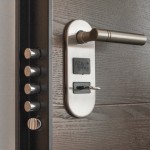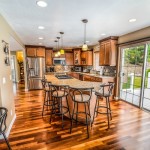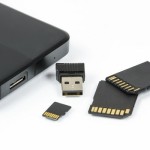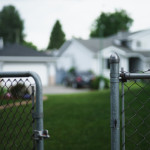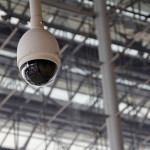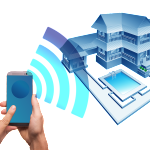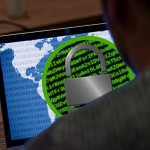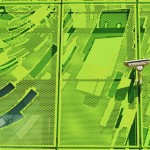Night Vision Cameras Vs. Thermal Cameras: Which Is Better For You?
When it comes to securing the perimeter of your home or business, you want a surveillance system that can perform in various conditions. For 24-hour monitoring, night vision cameras have been the popular solution. However, the emergence of thermal cameras has provided a more advanced solution. Learn more about the different types of night vision cameras and how thermal cameras differ from them.
Low-Light Cameras
These are also known as day and night cameras and electronically and automatically adjust lighting capture settings based on the time of day to produce optimal video images. During the day, IR cut filters are used to “cut out” IR illumination, allowing for color images. At night, the filter is removed entirely to allow the maximum amount of visible and IR light to reach the sensor and produce a monochrome image. The downside to these cameras is that they are completely dependent on lighting conditions. That is, too much light or no light at all will result in unusable images. Thus, the amount of visible light available drastically affects the image.
IR Cameras
IR cameras have a lens that is surrounded by LEDs which emit a beam of near-infrared energy to bounce off objects in its field of view. The image sensor is then able to create a picture; however, distance plays a crucial role in performance. Because the reflected IR light can only reach so far, these cameras are often limited to short-range applications.
Night Vision Cameras
Night vision goggles (NVG) and cameras capture visible light photons. As the photons penetrate a photocathode tube (which acts as an image intensifier), they are converted to amplified electrons that pass through a phosphorous screen and converts them back to visible light to create a picture (often in a greenish hue). Because these devices need just the right amount of visible light to function, they are virtually useless when there is ample light outside (ex. twilight) or in conditions where light is blocked (ex. smoke) or no light is available.
Thermal Cameras
Rather than performing based on light availability, these cameras produce video surveillance images based on the measurement of the electromagnetic heat radiation emitted by all objects and individuals. Their performance is unaffected by bright lights, complete darkness, foliage, and light fog. No matter how small, differences in heat are picked up and produce images with high contrast, which are essential to the success of video analytics and intrusion detection. These cameras may be better suited for properties which require strict perimeter security (ex. oil and gas industries, data centers, mines, power stations), and are often combined with other layers of protection (ex. fence sensors, microwaves, PTZ cameras).
Thermal cameras also boast long-range detection capabilities, thus, reducing the number of cameras needed. They can also be a good substitute for fences where fence installation is not possible. For example, ports and oil refineries have acres of water and land to secure and monitor. Thermal imaging and video analytics can create “virtual fence” and can be a more feasible and affordable solution than installing a physical barrier.
Do you use night vision cameras or thermal cameras to protect your property? Share with us on Facebook, Google+, Twitter, LinkedIn, and Pinterest.
If you need help deciding which night vision or other security cameras will best suit your surveillance needs, please feel free to contact us at 888-203-6294 or visit SecurityCamExpert.com today!
SecurityCamExpert.com Wants To Thank You
Thanksgiving is upon us and we always feel so honored and blessed to have such loyal customers. We are happy to provide you with the best security camera systems and equipment, professional installation, and exceptional customer service because your security is our priority. We appreciate your continued support over the years and we wish you the best for this Thanksgiving holiday and always.
And remember, we will be closed on Thursday, November 23, 2017 and Friday, November 24, 2017, for the holiday. Our normal hours will resume on Monday, November 27, 2017. We apologize for any inconvenience this may cause and appreciate your understanding.
From the SecurityCamExpert.com family to yours, we hope you enjoy a Thanksgiving filled with love, happiness and good food. Please be safe over holiday weekend.
Home Security Tools
A comprehensive security and alarm system for your home will help to keep you safe and give you peace of mind while you’re away. If you already have a home security system in place, it is likely that you are familiar with the different devices and security lingo. For those of you who are considering installing a security system, here are a few of the basics you should know about.
Control Panel
This is the component that communicates with all other devices in your system and also connects you to your alarm monitoring company. It is usually a touchpad in which you enter passcodes to arm and disarm your alarm, and is often considered the heart of your system. Some advanced systems enable voice control for the control panel.
Key Fob
Instead of the touchpad, a key fob allows you to arm and disarm your alarm upon exiting and before entering your home, similar to a remote car lock. These may be used at home or remotely. Depending on how many people are living with you or need access to your home, your provider should be able to accommodate the number of key fobs necessary.
Motion Sensors
These are often referred to as motion detectors and communicate with the control panel to let them know when there is movement. Motion sensors are installed on doors and windows, and when the sensors are touching it is noted as secure. If a door or window is opened while the system is on, the sensor is triggered and communicates the activity to the control panel.
Security Cameras
Keep a close eye on everything whether you’re home or away. There are various types of security cameras to suit your needs including Pan/Tilt/Zoom, dome, bullet, day & night vision, and more. In conjunction with a corresponding app, Internet Protocol (IP) cameras can record activity when detected and send you an alert along with footage.
Electric Door Locks
Have you ever been at work or out on the town and wondered whether you remembered to lock the door? Electronic door locks can let you rest easy. You can check your locks remotely, and some even allow you to lock and unlock them remotely via a smartphone app. That way if your kids forget their keys, or you absentmindedly left the door unlocked, you can easily fix the situation.
Panic Button or Pendant
This wearable device is a popular add-on that allows a direct connection with the monitoring company to alert them when help is needed. By pressing the panic button, the monitoring company can communicate with the user and send the necessary emergency personnel. For those who have elderly loved ones living alone, this is a smart device to invest in for them.
If you have any questions about security cameras or surveillance systems, please feel free to contact us at 888-203-6294 or visit us online at SecurityCamExpert.com to browse our stock. You can also find us on Facebook, Google+, Twitter, LinkedIn, and Pinterest.
Indoor Security Tips
Security cameras placed outdoors allow you to monitor your property while acting as a deterrent for trespassing. But what happens if criminals proceed anyways?
Indoor security cameras will show you what happens when the intruders get in. Should theft or damage occur, you are left with video evidence of the crimes to assist in capturing the criminals.
For everyday use, indoor security cameras help to monitor daily activities, such as kids returning home from school, or checking in on pets while you’re at work.
While there are several benefits of indoor cameras, it may be difficult discerning the most effective places to install them. Here are some helpful tips for choosing the best locations for your indoor security cameras.
Statistics show that the most common entry points for burglars are through first-floor doors or windows, thus, your main entrances should be your top priorities. The front door, back door, garage door, and other first-floor exterior doors and windows should be equipped with some type of security (ex. locks). If possible, installing security cameras to cover all of these spots would be ideal.
- One of the most common places for an indoor security camera is in a high traffic area that provides coverage for as many areas as possible. Try to find the right angle and placement for a camera that will give a bird’s eye view of the larger area. For example, the family room may have views of the kitchen, back door, garage door entrance, and possibly even the front door.
- For larger homes or homes with a second or third story, additional security cameras may be necessary to sufficiently cover the interior of the home. Expansive one story homes may need multiple cameras to cover different rooms and entrances, while multiple story homes may need more cameras to cover each level.
- If an extensive security camera system does not fit within your budget, choose key areas that are highly targeted by burglars and install cameras there. For example, the family room often houses expensive televisions and electronics. Or if you have a family safe, you can place a camera in that room for added security.
- Once you have chosen the locations for your cameras, be sure to install them out of reach. Not only will this help to get a better view, but it will also help to prevent any damage of theft. If your security cameras are easily accessible, burglars may destroy them to eliminate evidence, or possibly steal them.
Share your indoor security camera tips with us on Facebook, Google+, Twitter, LinkedIn, and Pinterest today!
For a great selection on indoor security cameras and more, visit SecurityCamExpert.com. For more information on site surveys and our installation services, please call 888-203-6294.
Safety, Security, & Storage
Personal and public safety is always a top priority. Recent events have shown us that, whether planned or spontaneous, violent attacks can be extremely tragic and devastating. These also remind us that improving our security and surveillance systems is vital and show us what needs to be addressed and how we can safeguard against future threats.
Border & Airport Security
While border security is a controversial subject, in terms of security, the border or perimeter is essentially a vulnerable point of entry. Because of this, governments are looking to improve surveillance and secure boundaries. One way they are stepping up security is by employing remote video surveillance and analytics.
For example, the Department of Homeland Security have strategically placed towers to provide remote video surveillance along the southwestern and northern borders of the United States. The U.S. Customs and Border Patrol agency believe more towers would help to expand surveillance and provide more protection in remote areas.
Airports act in a similar fashion, as they represent a type of boundary and serve as a key point of entry for international travelers. With that said, airports must be monitored and secured carefully to protect not only passengers and visitors, but also aircraft, terminals, parking facilities, fuel facilities, airline buildings and power supply facilities. In addition, airports are often a prime target for terrorists since large, diverse crowds congregate, making security both critical and a major challenge.
Thus, video surveillance is crucial to airport security systems. Security cameras are placed throughout the various facilities to monitor crowd activity, perimeter gates and fencing, and other high traffic areas (ex. security checkpoints, baggage handling, hallways, seating areas, entrances/exits). Live streams are monitored continuously with the aid of video analytics and facial recognition is used for staff as well as guests. This technology quickly identifies who has authorized access to certain areas and can spot known suspects and criminals. Furthermore, virtual tripwires help to secure certain boundaries, and behavioral analytics algorithms help to detect any unusual behaviors, including left-behind packages.
To maintain optimal security and protection at borders and airports, security systems must monitor suspicious activity over time, track movements of watch-list suspects and share said information among agencies. It is a complicated process which depends on the sufficient work of real-time and archival video surveillance footage. And while advances in security camera technology (ex. higher-resolution capability, panoramic viewing, onboard analytics and integrated audio) are incredible, they also increase the need for sufficient storage capacity.
Before you make the decision on video surveillance storage, here are some factors to consider:
Retention Time
This can have a dramatic impact on the amount of storage necessary. Due to regulations and litigation issues, retention time is increasing, thus more storage capacity is necessary.
For example, HB 976 was passed in Georgia in 2016, requiring law enforcement to retain video from body-worn cameras and vehicle-mounted devices for a minimum of 180 days. In addition, any video recording related to a criminal investigation or pending litigation must be retained for 30 months.
Aside from complying with regulations, the value of video may increase in regards to analyzing people and patterns are observed over longer periods of time. It is important to consider long-term storage needs when making retention policy decisions.
Access
When it comes to storage, options include enterprise digital video recorders, boxed appliance network video recorders, PC-based network video recorders, enterprise storage platforms, tape, and cloud storage. Some make it easier than others to retrieve and share archived footage.
Before deciding on a storage solution, take into account the individuals who may need to access to the footage, how quickly they will need it and whether or not video files will be shared with other agencies.
Cost
Storage accounts for a good chunk of video surveillance budget since many opt for high-performance disks over tape (a more cost-effective solution). In order to minimize costs while still maintaining quality performance, you may want to size disk storage to meet ingest performance requirements, and then build long-term retention capacity using tape or cloud.
Video surveillance is a vital tool for law enforcement and other government officials, and the expanded use of more powerful cameras along with new video analytics greatly improves security. However, as mentioned, new capabilities have a significant impact on video storage as well.
Not all storage solutions are the same, thus, taking the time to understand how each solution works and finding a balance between retention time, accessibility, and cost is crucial to making the best decision.
If you need security camera systems and storage for your home or business, visit SecurityCamExpert.com to browse our stock. To schedule a site survey or request a free quote, please call 888-203-6294. You can also connect with us on Facebook, Google+, Twitter, LinkedIn, Pinterest, and Yelp!
Perimeter Security
Whether you are securing your home or business, perimeter security is often your first line of defense. Aside from the exterior of the structure, perimeter security creates boundaries to keep intruders out. If you are considering perimeter security, there are numerous options available to you – here’s what you need to know.
Locks
Locks are very important to perimeter security. If you have nothing protecting your property beyond the walls of your home or building, you will need to invest in strong, sturdy locks. The most common breach would be forced entry, which simply destroys the lock to gain access. To safeguard against this, you want to choose locks that make use of hardened metal alloys that are as thick as possible.
Cutting attacks are common if you are using padlocks on your gates. Aside from the shackles of the locks, the hasp or chain being secured by the padlock may also be targeted for cutting. If these are weaker than the lock, the strength of the lock will not matter.
When it comes to covert entry, bump keys are more of a concern than lock picking, as the latter wastes time and effort. The internal complexity for locks will help increase perimeter security and prevent unauthorized key duplication.
Walls
Unlike a fence, walls provide more privacy as they better obstruct visibility. Higher walls mean lower visibility and a greater obstacle to gain entry. The downside is that the decreased visibility affects both sides, meaning that while outsiders may not be able to see in, you may not be able to see anyone approaching the property.
Luckily, the visibility concerns for high walls can be resolved with the use of security cameras or other forms of documentation (such as security guards). Documentation is a key consideration (which will be discussed further), but it is not always feasible for some.
In the end, it all comes down to the intention of your perimeter security. With a wall, you get more privacy and a sturdy barrier which allows you to put more focus on securing the gate.
Fencing
Fences offer extreme flexibility in that the price, look, and functionality have the most range. You can adjust the visibility by choosing different designs and even growing ivy or other plants around it. In extreme cases, most common fences may be easier to electrify, depending on the material of the fence.
Unless you have concerns about automotive ramming threats, the fact that a fence is weaker than a wall may be a minor detail. However, fences may be compromised at certain points, whether from vandalism or wear, thus creating entryways which defeat the purpose of perimeter security measures. Even if the openings are not wide enough for humans, you run the risk of animal infestation or pet escape.
Wood fences and chain link fences are often the most common types, and usually signify a boundary that others should not cross, or simply denote a property line. Fences alone are rarely high security, but with electrification or barbed wire, they can be somewhat intimidating.
Gates
A gate is the moving section on a gate or wall that allows entry and exit through perimeter security. Because this is usually the only point of entry and exit around the perimeter of a building, the gate will need a locking mechanism.
If you are planning on taking vehicles past the perimeter security, you may want to use a motorized track and electronic lock. For gates with less traffic or only foot traffic, choose a high-security padlock. There may also be a gate setup that allows you to use a deadbolt and or/keyed handle/knob.
For effective perimeter security, a keyed handle/knob may not be the best choice. A deadbolt provides more security, however, the strength of the deadbolt must be considered. But keep in mind, if the lock is too strong, the material of the gate may be attacked, or intruders may simply climb over.
Lighting
Perimeter security systems should always consider lighting, and one of the first things to assess is shadows. Trees, pillars and other tall obstructions will create dark shadows for criminals to lurk. With proper light, you afford yourself the ability to see criminals approaching or attempting to bypass your perimeter security.
Motion sensor lights are effective in that they focus attention and are often the choice for many residential buildings without security guards. For residents, a light turning on suddenly will often alert them of unexpected movement around the house. For those properties with high walls, or an obstructing fence, the abrupt light hopefully catches the attention of neighbors or pedestrians.
Despite drawing attention, your security depends on whether or not bystanders or neighbors intervene. Everyone has an interest in preventing crime, but if someone is unaware of the threats or the victim, people may do nothing to avoid confrontation. It may behoove you and your property to get to know your neighbors and keep a lookout for each other.
Alerts & Notification
Some people may struggle with the decision of investing in a dog or an alarm system. While getting both is definitely an option, the decision will likely come down to your ability to take care of an animal. When it comes to alarms, you will want one that offers monitored security so that authorities can be notified in case of emergency.
However, these notifications are only effective if response times are within the average time it takes to commit a break-in. If not, alerts and notifications are rather useless. A loud alarm may help to alert anyone who is around to the crime that is taking place.
If you’re looking for more discreet notifications, a smart lock with access notifications might be the solution. This allows you to know when a lock has been opened, and can be extremely helpful if you suspect any internal threats.
Documentation
Most perimeter security systems rely on security cameras. They are largely accessible and are great for capturing evidence of threats and criminal acts.
Before installing security cameras, you should know what is allowed and what is not. You must abide by the law when it comes to documentation efforts otherwise your footage will be useless and may even get you in hot water.
When choosing cameras, you should keep your security intentions in mind. If you need footage that will hold up in court, you will need the right kind of camera to record quality video in that environment. You will need to consider glare from the daylight and possibly night vision. Also, you need to consider placement as you may need multiple cameras to adequately cover your perimeter. If you have more questions regarding security cameras systems and installation, feel free to call us at 888-203-6294.
Natural Barriers
A positive natural barrier is something that offers another level of security to your property. This can be anything from the proximity to a police station to a single, long road leading to your home.
Consequently, there are also natural barriers that prevent you from taking full advantage of your possible perimeter security system. For example, a treeline on the side of your property may offer a natural border, however, it may also help intruders cover their approach. Also, motion sensor cameras and lights placed in heavy foot traffic areas may produce lots of false alarms, becoming more of a nuisance than an effective security measure.
Your best bet is to identify what works for you and what does not in terms of security. You shouldn’t invest in a method of perimeter security just to use it. Focus on the positive barriers and try to compensate for any negative barriers you cannot change.
Aesthetics
The consideration for aesthetics is to find a balance between it and your perimeter security. Rather than choosing to make the property look good and then incorporate security, you should be trying to make the security you need look good.
If you are adding to your landscape or home, you should always consider how it will affect your perimeter security. It is best to opt for something with a neutral or positive effect, not something that will be a detriment.
Access Control
Who has access to your property is a very important part of making your perimeter security work to your benefit. Key control is a good starting point (numeric codes, RFID remotes, physical keys, etc.). With codes and biometric locks, your access control management software may make it quite simple to know who is entering the property and when. If any issues arise, it is easy to simply revoke privileges.
Those who have access should be trusted individuals. You should be sure that they will not take advantage of your property and will take the necessary precautions to protect their key from being stolen or misused.
Key control for physical keys can be taken care of by investing in locks with patented keyways. This will improve your protection against most forms of covert entry, but mostly it will prevent unauthorized key duplication.
Which perimeter security methods do you find most effective? Share with us on Facebook, Google+, Twitter, LinkedIn, and Pinterest.
Visit SecurityCamExpert.com to browse our selection of quality CCTV surveillance systems and learn more about our Installation and support services.
The Modernization Of The Security Camera Industry
From simple cameras that captured video of the area in front of them to advanced cameras that offer exceptional features, our security camera systems have come a long way. The security industry has embraced the high-tech boom, offering sophisticated solutions and attracting more interest from consumers, thus driving home security system sales up over the years. We can only expect this to continue thanks to these security camera innovations, as well as those yet to come.
360-Degree Views
Video quality was once the defining factor of how advanced your camera was. Since high-definition and improved resolutions have taken care of that aspect, focus has now turned to the range and extent of camera views. Currently, most cameras can offer about 130-degree views, but 360-degree views are already being offered by newer security cameras.
Facial Recognition
This type of biometric technology enables your security cameras to distinguish strangers from members of the household. By doing so, home owners can be alerted to when members arrive home, as well as when unwelcome guests try to enter.
Night Vision
What was once a special feature has now become a standard function for security cameras. Night vision cameras can see almost as well as they can during the day and are often built to withstand extreme weather conditions, making them ideal for both indoor and outdoor use.
Smartphone Integration
The security room, dedicated to numerous monitors and feeds, is becoming obsolete. Modern technology is now allowing security cameras to be integrated with smart phones, sending the live feed directly to these devices. Users are even able to change the angle of the camera from their device to investigate the area in question further.
Solar Power Integration
Solar-powered camera systems are much more energy efficient and can cut out the complications and vulnerabilities of hard-wired camera systems. A broader range of businesses are able to access security solutions thanks to solar-powered security cameras paired with wireless systems.
Two-Way Talk
This feature is especially convenient for parents and pet owners to check in on their loved ones. Users are able to communicate through the camera to check in with kids or scold unruly pets. This feature can also be used to scare off intruders remotely, avoiding any immediate danger.
Voice Control
Voice commands and voice control has become a staple in our everyday lives, so bringing it into the security realm only makes sense. With voice control technology, you are able to manage your security systems completely hands-free. For example, you can turn on a camera, lock the house, or close the garage by simply activating voice command.
Which of these features do you find is the most effective and convenient? Share with us on Facebook, Google+, Twitter, LinkedIn, and Pinterest.
For a great selection of security cameras and CCTV surveillance systems, visit SecurityCamExpert.com. For more information about free CCTV quotes, site surveys, and installation services, please call 888-203-6294.
Choosing A Smart Home Security System
More and more people are turning their homes into smart homes. What once was seen as an extravagant luxury for the wealthy has now become accessible and affordable for nearly all homeowners.
While there are many ways to upgrade, smart home security seems to be the top priority for most home owners. Aside from protecting your home from burglars, fires, and other potential threats, you may also benefit from smart home security by getting rebates or special discounts from insurance companies.
Advances in technology have enabled smart home security manufacturers to offer varying levels of home security systems at different price points. Here’s how you can protect your home, from basic to advanced features.
If You Are On A Strict Budget…
At the bare minimum, smart home security starts with a camera. Smart security cameras can provide footage to identify burglars after the crime has been committed or can alert owners when unauthorized activity is detected, allowing burglars to be caught in the act. These cameras not only offer security for your home, but can be used as baby monitors and nanny cams. Special features may include the ability to differentiate between human and pets to prevent false alarms, as well as two-way audio to enable communication with anyone in the room
As beneficial as a one-camera setup can be, there are also limitations. The first and most obvious limitation being that one camera can only cover one room. Also, you must actively monitor the feed to maintain security. If you would like a system that needs less attention, you may want to explore other, more advanced options.
If You Are Looking For More Comprehensive Home Security…
You will want to look for a home security system that addresses the different ways your home security can be breached. Additional security components include motion sensors, door and window sensors, and surveillance signs.
- Motion sensors are installed on walls to detect movement through an infrared sensor. If you have pets, you can adjust the height to avoid false alarms.
- Door and window sensors are attached accordingly and either sound an alarm and/or alert your device when these are opened.
- While it’s not exactly smart technology, surveillance signs can help to deter burglars from even targeting your home. If deciding between a home with or without a security system, burglars will likely choose the latter because there’s less of a risk of getting caught.
If You Want A Highly Sophisticated Home Security System…
For around-the-clock surveillance of your home, you may want to invest in a security company that offers monitoring services for a monthly fee. While the hardware is almost the same as the aforementioned systems, when the alarm is triggered, the security company is notified and they assess the danger and alert the necessary authorities. Since you may not have your phone or device available at all times (ex. movies, traveling), this service can come in very handy.
There are plenty of DIY and professional smart home security solutions on the market today. Which one is your system of choice? Share with us on Facebook, Google+, Twitter, LinkedIn, and Pinterest.
Protect your home with an affordable CCTV surveillance camera system from SecurityCamExpert.com. Browse our stock online or call 888-203-6294 to discuss your options with a representative today!
More Than Just Cyber Security
When running an online business, one of the most important aspects is security. Aside from protecting your company data, customers want to feel secure and know that they are safe when connecting and shopping on your website. Things like SSL and encryption are standard for any legitimate ecommerce business.
Unfortunately, small businesses with physical locations sometimes overlook the proper security measures, which can end up hurting the company in many ways.
Build confidence with your consumers by employing smart security practices with both your physical locations as well as your online presence.
Benefits Of A Secure Business
By securing your business, first and foremost, you are increasing safety for your employees and your business overall. When taking the appropriate measures, you can create a cohesive team and a sense of belonging among your staff. Applying on-premise security measures delivers the message that you value your employees and are concerned for their safety. In doing so, you are also improving job satisfaction, which can lead to employee retention.
Aside from improving employee morale, securing your business shows your customers that your staff and brand are worth protecting. Security methods also convey professionalism and help to build trust with your customers. By strengthening the legitimacy of your company, you are building a strong foundation for your business.
So how can you improve security in your business? Here are a few things you can implement to get started.
Access Control
One of the most effective ways to protect your business is to control who gets in or out. Make it harder for unauthorized guests to gain access by graduating from a simple lock and key to access control cards. They are much harder to duplicate than keys, and when someone leaves the company or you need to revoke access to one person for whatever reason, all you need to do is change the database – no need to change the locks or the entry code.
Photo ID
Adding photos ID cards or badges will help your customers clearly identify your team members, as well as promote value amongst your team. It also adds an additional layer of security in helping to identify who should and should not be on site. It may prove beneficial for businesses to invest in their own ID card printer to avoid any possible counterfeits.
Easily Identify Visitors And Contractors
If left to their own devices, visitors and contractors may pose a risk in your building. Make sure you have a check-in system as well as photo pass and color coded lanyard so that everyone on the team can easily identify who’s who. Your team should also know the protocol for when an intruder is on the premises.
Secure Networks
Although we are mainly focused on physical security, it is worth mentioning that cyber security is also of the utmost importance. These days, it has bearing on your physical security as well. Strong passwords, multi-step authentication and security from the cloud are smart and simple ways to minimize risks for your business.
Security Culture Among Team
Your team should have a strong knowledge of your security procedures. You should have security specialists analyze your business needs and assist you in creating clear, actionable policies for your employees to follow. Once implemented, these should be reviewed for all employees so that your team is on the same page and understand the company’s security policy.
Security procedures can play a crucial role in building a legitimate, successful business. What security measures do you implement to safeguard your business? Share with us on Facebook, Google+, Twitter, LinkedIn, and Pinterest.
Contact us at 888-203-6294 or visit SecurityCamExpert.com to learn more about our CCTV surveillance packages, site surveys, and installation services for your home or business today!
Video Surveillance Technologies
Video surveillance has often proven helpful in producing evidence after a crime has been committed, and plays a role in deterring some incidents. But unfortunately, it seems video surveillance is no longer enough. Threats of violence and attacks have become more prevalent, forcing us to increase our security measures.
Containing and preventing violence has become rather costly over the years. In fact, the economic costs for prevention and recovery reached a peak high at $52.9 billion in 2014. This cost is far greater than the cost of carrying out the acts.
A real time solution is necessary. This can start with technology that has the ability to detect weapons while assessing the level of threat in the process. While this advanced technology could save lives, it could also save us billions of dollars by stopping these incidents before they happen.
For example, the fiscal impact of the September 11th attacks was found to have cost $55 billion in physical damage, $123 billion in economic damage, along with other expenses such as developing the Homeland Security Department and funding the war. The tragedy of lives lost and money spent to repair damages shows us that a more proactive approach, rather than reactive measures, would prove to be more effective.
It is estimated that the United States spends about $100 billion a year on counter-terrorism measures. With proactive efforts, these reactive expenses could possibly go toward other areas that need attention and improvement.
Aside from anti-terrorism, surveillance technologies can benefit many industries. For example, big retailers are investing more into their security. Wal-Mart, for instance, is in the process of deploying drones to monitor warehouse inventory. It is advances like this that get us one step closer to embracing futuristic machines.
What are your thoughts on the future of surveillance technologies? Share with us on Facebook, Google+, Twitter, LinkedIn, and Pinterest.
Shop our selection of CCTV security cameras systems and more at SecurityCamExpert.com. If you have any questions, please call 888-203-6294.


